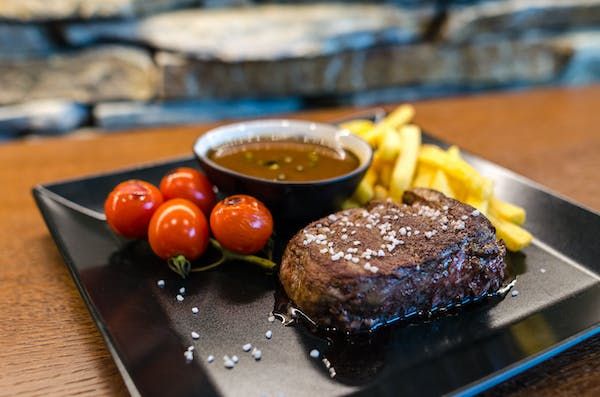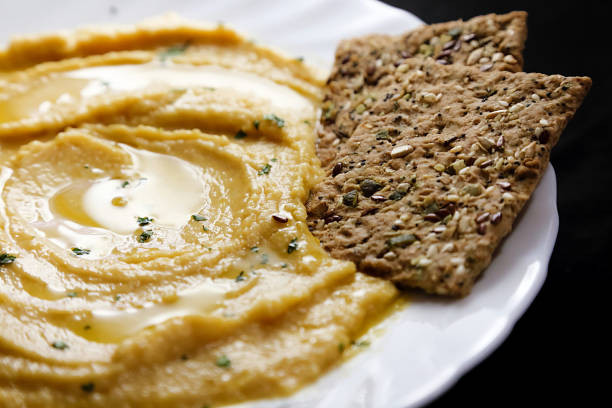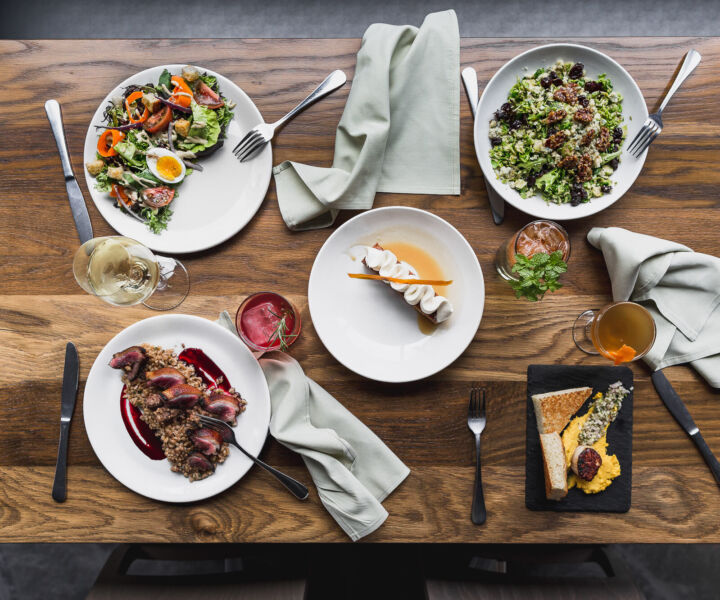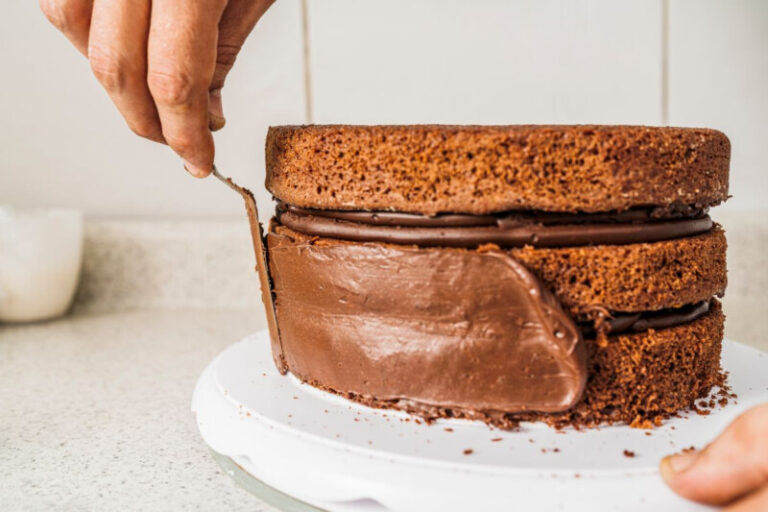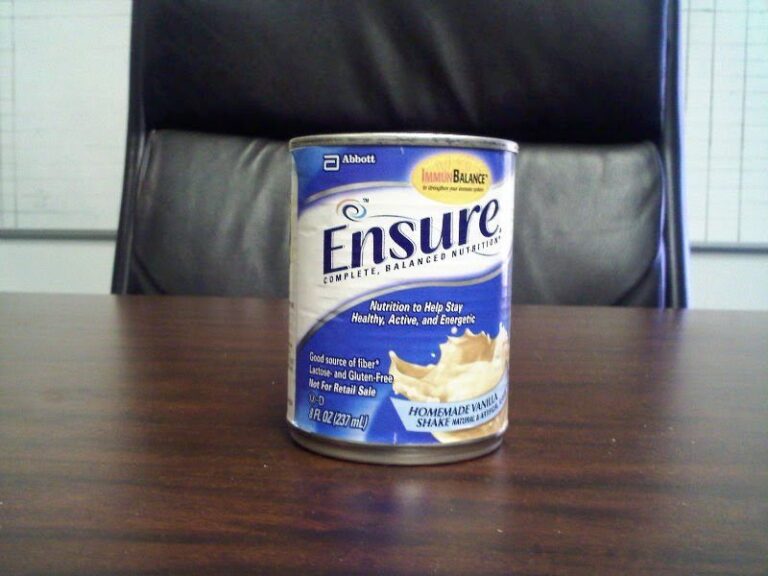How Do You Know If Chewy Beef Is Undercooked Or Overcooked?
Preparing beef can be tricky. While some tender cuts of meat like filet mignon are meant to be cooked quickly over high heat, others require prolonged simmering to break down their collagen. Knowing whether chewy beef is over or undercooked depends largely on the particular cut.
Tenderness is key for an enjoyable beef dish. No one wants to bite into meat that requires tedious chewing or that has an unpleasant gritty texture. Being able to identify signs of overcooking and undercooking allows you to salvage the meal. Read on to gain confidence in handling different beef cuts.
Determining If Beef Is Overcooked or Undercooked
When assessing if chewy beef is over or undercooked, the first thing to consider is the cut of meat itself. This gives clues about appropriate cooking times and methods.
Importance of the Cut of Meat
Different beef cuts have varied collagen and fat content, which affects how they respond to heat. Lean tender cuts like sirloin can toughen up and dry out with extended cooking. Tougher cuts become tender when slow cooked to break down collagen.
Cuts like filet mignon, T-bone steak, or New York strip are naturally tender. They come from parts of the cow that get little exercise, like the loin or ribs. With minimal connective tissue, these cuts can quickly turn from juicy to dry and chewy with overcooking.
Cuts like brisket, chuck roast, or round come from heavily worked areas. They contain abundant collagen that requires moist heat over time to dissolve into gelatin. If undercooked, the meat retains a rubbery texture. Well done overcooking also dries out the meat.
Substituting a tenderloin steak in a pot roast recipe will likely produce disappointment. The quick-cooking lean cut will toughen up instead of properly shredding. Similarly, swapping in a chuck roast for grilled steaks can result in unpleasant chewiness.
Different Cooking Techniques for Different Cuts
Matching the cut to the right cooking method is key. Quick frying or grilling works for delicate textures. Slow cooking melts collagen for tenderness.
Tender cuts hold their shape with direct dry heat. A hot skillet or grill pan gives a nice sear while keeping steaks juicy inside. Grilling imparts added flavor from any charring.
Pot roasting, braising, or barbecuing slowly tenderizes tough cuts. The meat cooks gently over several hours in moist environments, whether submerged in liquid or sealed with foil.
Types of Cuts: Overcooked or Undercooked
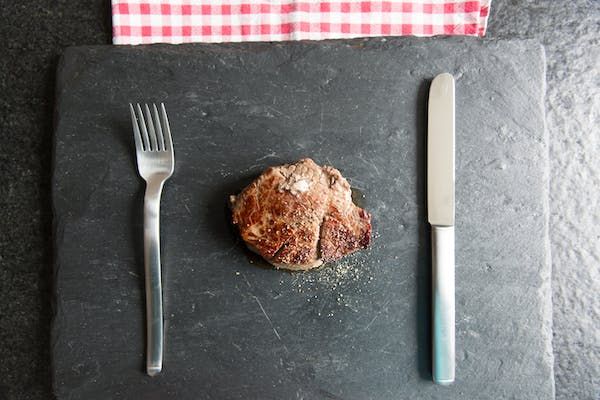
Now that we have covered how beef cut influences technique, let’s examine specific examples of over and undercooked meat.
Steaks Meant for Quick Frying
Premium steaks require quick cooking to prevent chewiness. Examples are ribeyes, New York strips, filet mignon, and sirloin steaks.
The tender meat fibers easily toughen and shrink when cooked too long. Steaks dried out from overcooking lose their juiciness, turning unpleasantly dense and chewy.
These expensive cuts are naturally supple and moist. Extended frying presses out their natural juices, drying out the meat and worsening texture. Check often to avoid overdone steaks.
Beef Meant for Slow Cooking
Cuts like chuck roast, beef shank, and brisket turn meltingly tender when braised. Their high collagen content benefits from prolonged wet heat.
The abundant connective tissue makes these cuts chewy and sinewy in raw form. Don’t be alarmed by the initial texture. Lengthy moist cooking is the solution.
Given sufficient time, the collagen transforms to luscious gelatin. What started out tough ends up succulently tender after hours in the pot or smoker.
Braising in flavorful liquid helps break down collagen. Fat marbling also lubricates the meat, preventing dryness. Lack of moisture dries out the meat, slowing collagen breakdown.
Beef Cuts That Need Slow Cooking
Certain beef cuts specifically benefit from prolonged wet cooking methods to achieve tenderness. Here are some details.
Areas like the chuck, brisket, and round do the most work and have the highest collagen content. Slow cooking is a must for these cuts.
Chuck roast, beef brisket, round cuts like eye of round, and beef shank all contain abundant collagen. Other examples are oxtail, short ribs, and flank steak.
The uncooked meat feels extremely firm and resistant when pressed. You’ll notice the meat starting to break down and shred as it cooks. Don’t judge doneness too soon.
Beef Cuts That Need Fast Cooking
Tender beef cuts cook up best with brief exposure to high heat. These are the usual steakhouse offerings.
Individual muscle slices like strip steak, tenderloin, or ribeye can be served as steaks or stir-fried. Quick searing preserves their delicate texture.
Examples: T-Bone, Porterhouse, Filet Mignon, Ribeye, Sirloin, Top Loin, Tenderloin, Flank Steaks (Rump, Fillet, and Flat Iron in the UK)
The tenderest steaks come from the rib and short loin sections. Look for “loin” or “rib” in the name, like sirloin, tenderloin, ribeye. Other tender steaks are T-bone, Porterhouse, filet mignon, and flank steak.
These cuts feel supple, not firm like the collagen-rich ones. They’ll firm up and shrink slightly when cooked. Overcooking exaggerates this effect, so watch the time.
How to Know If Beef Is Overcooked or Undercooked
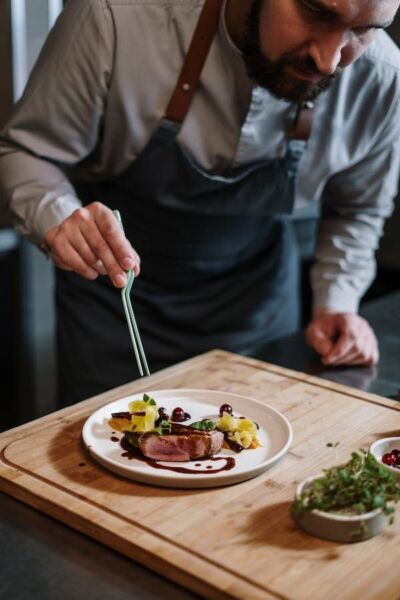
Now let’s get into the specifics of identifying over and underdone chewy beef and how to prevent it.
A steak cooked beyond medium loses its reddish-pink interior and any traces of moisture. The meat has a uniform dull, grey appearance throughout when sliced. It feels dry to the touch.
Pot roast or brisket cooked too long literally falls apart into shreds, drying out in the process. The meat seems almost powdery from excessive collagen breakdown.
A steak not yet cooked to medium rare will still have a very reddish, cool center when cut into. The interior will look distinctly underdone compared to the browned exterior.
If a collagen-rich cut hasn’t cooked long enough, you’ll still encounter chewiness and resistance when biting in. The meat won’t yet have broken down but will seem tough and rubbery.
Rely on a meat thermometer, the touch test, or tasting samples to assess doneness while cooking. Track cooking times as well for an idea of progress.
Tips on Cooking Steak Perfectly
Follow these guidelines to turn out tender, juicy steaks every time.
Use a Very Hot Pan or Grill to Sear the Outside: Get the pan or grill piping hot before adding oiled steaks. You want an instant, flavorful sear to form without overcooking the inside. Let the meat rest before cutting.
Cook to your preferred doneness, about:
- 2 minutes per side for rare
- 3 minutes per side for medium rare
- 4 minutes per side for medium
Turn only once so the sear remains intact.
Rest the steak for several minutes after cooking to allow juices to redistribute: Letting it rest prevents juices from running out when you cut into the steak. The temperature will also continue rising slightly during resting.
Tips on Slow Cooking Beef Perfectly
For tender, fall-apart pot roast or brisket, use these slow cooking tips.
Cook in Liquid or Trap in Steam With Foil to Prevent Drying Out: Moist environments are crucial for braises and barbecue. Pot roast cooks immersed in liquid while foil-wrapped brisket traps steam.
Follow Recipe Times and Temperatures for Accuracy: Collagen-rich meats require hours to properly tenderize. Trust the suggested cooking times for the cut you are using.
Avoid Cooking at Too High a Temperature: Gentle simmering or low oven temperatures work best. High heat causes brisket or chuck roast to dry out before the collagen fully melts.
Fixing Chewy Beef
Don’t despair if your beef still turns out underdone or overcooked. Here are some remedies.
Fixing Undercooked Beef: Continue Cooking Slowly or for a Few More Minutes
You can still salvage the dish with extra cooking time. Just be gentle.
Return the pot roast to the oven or slow cooker to finish tenderizing without burning it. Pot roasts need hours of cooking.
Give the steak another minute or two per side over lower heat. Flip just once to preserve the crust.
Fixing Overcooked Beef: Stop Cooking, Cut Into Smaller Pieces to Break Down Meat Fibers
Prevent further drying by removing overdone beef from the heat. Slice or shred it to improve texture.
Moist toppings like pan juices, gravy, or sauce help revive dry roasts or steaks. They add much-needed liquid to the meat.
Chopping up the dried-out meat helps break down the fibers. Pair it with flavorful sauces.
Conclusion
Perfectly cooked beef requires paying attention to the cut of meat and using the right technique. Quick-searing tender steaks preserves moisture while prolonged braising or smoking tenderizes tough cuts. Checking doneness frequently helps prevent ending up with chewy beef. With the knowledge from this article, you can identify and fix both overcooked and undercooked beef. Please share any other tips you have in the comments!
